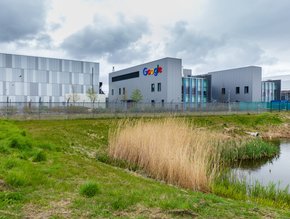Crisis to opportunity: Harnessing data for energy solutions

As the Europe-Russia energy relationship lies in ruins, unpredictable prices raise doubts about the viability of fossil fuel investments and infrastructure. The energy crisis has triggered a significant shift in international energy trade, bringing new risks and addressing long-standing vulnerabilities.
The shape of the new world is still evolving, and there's no possibility of returning to the past. History has shown that adjusting to energy crises is not a seamless process – governments have made commitments to transition to clean, renewable energy, which will occur within the context of this process.
Unlike fossil fuels, however, renewable energy generation is inconsistent. Utilising data effectively will play a crucial role in enhancing the efficiency and output of both conventional and renewable energy assets, while concurrently equipping businesses with the means to expand and meet evolving customer demands.
Predicting future demand
Pablo Boixeda, Solutions Engineer Manager at data powerhouse, Cloudera, believes that there are several challenges that companies need to tackle from the perspective of renewable source power generation.
“Effective use of data can directly impact the cash flow of wind and solar-generation companies in areas such as real-time decision-making. With the right insights, energy production from renewable assets can be optimised, and future supply and demand can be better predicted,” he states. “Organisations working in traditional energy generation will have to adjust costs by improving the efficiency of these plants.
In this respect, several studies project that the proper use of advanced analytics implies savings of between 5% and 7.5%. This is due to an improvement in plant uptime, supported by predictive maintenance applications and coupled with optimisation of the fuel consumption that powers these plants, alongside fine-grained performance monitoring that eliminates over-production.” Boixeda says the need to have a data platform that allows for a fine-tuned analysis and prediction of supply and demand will become essential if energy companies are to operate in a more efficient, profitable way.
Ensuring energy security through the grid
In its 2022 report, the International Energy Agency highlighted the importance of increased cooperation and data sharing between transmission and distribution grid operators in helping to ensure energy security. The organisation believes this can be achieved through the coordinated operation and planning of transmission and distribution systems between operators.
This view is also expressed by Boixeda, who says the issue of grid management is key. “The business of energy transmission and distribution has undergone little change in recent years but can be impacted by a number of factors. Changes in consumption habits – like an increased demand from charging electric vehicles at home and the injection of energy from solar panels – means daily demand patterns are becoming more volatile,” he states.
“So, to cope with these changes and to avoid overloads, distribution companies will have to invest in optimising the grid, which may put pressure on profitability and cash flows. Investment is unavoidable, so the question is: how do companies future-proof their assets as well as prepare themselves for the future?”
Boixeda believes grid management has been made easier due to the implementation of IoT solutions, boosted by the introduction of communication improvements such as 5G. Through advanced analytics, energy companies can collect and analyse data in real time, allowing them to optimise operating costs, and even define predictive maintenance policies that guarantee the level of service and savings.

Sustainable green cloud approach: DCs and cloud computing
To ensure long-term growth as well as meet the increasing demand for cloud computing and data management for the energy sector, it’s crucial to manage the rising energy consumption and carbon emissions in a fully sustainable manner.
As companies move away from traditional on-premise data centres to cloud computing, green technology offers an opportunity for organisations to reduce carbon emissions – both for their own financial benefit and for the benefit of the environment. Countless tech companies are reducing energy costs by utilising a green cloud approach.
As stated by Valerie Da Fonseca, WW Sales and GTM Director of Greenlake Cloud Services at HP Enterprise: “30% of large data centres servers are unused, that means a waste of $30 billion annually. “I really try to help address the key causes of inefficiencies while helping our customers execute an efficient hybrid, multi-cloud delivery model because this helps deliver many of the sustainability benefits that we commonly associate with the public cloud, such as decreasing energy use through dematerialised infrastructure. Using them as a service consumption model really helps our customers get exactly the same experience with the benefits of sustainability.”







